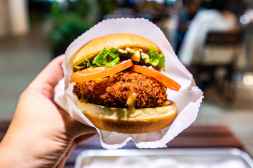How Fusion Foods Reveal the Journey of Migrant Communities

SUMMARY Fusion cuisine reflects the journeys of migrant communities by blending culinary traditions from different cultures. These unique dishes serve as cultural bridges and identity markers, illustrating stories of migration and adaptation. As migration continues, fusion food will keep evolving, offering rich insights into cultural diversity through food.
Fusion cuisine is more than just a blend of flavors; it tells the stories of migration, cultural exchange, and adaptation. By examining how different culinary traditions merge, we gain insight into the journeys of migrant communities and how they shape new identities through food.
The Origins of Fusion Cuisine
Fusion cuisine arises when two or more culinary traditions intersect, often as a result of migration or trade. Migrants bring their native flavors and cooking techniques to new lands, where they encounter local ingredients and culinary customs. This blending creates unique dishes that reflect both heritage and adaptation.
Migration as a Catalyst for Culinary Innovation
When people migrate, they carry their food culture with them but must often adapt due to availability of ingredients or local tastes. These adaptations lead to innovative recipes that combine elements from different cultures. For example, Chinese immigrants in Peru developed ‘Chifa’ cuisine by mixing Cantonese cooking with Peruvian ingredients.
Food as a Cultural Bridge and Identity Marker
Fusion foods serve as bridges between cultures by bringing together diverse culinary practices into one dish. They also become identity markers for migrant communities who maintain ties to their origins while embracing their new homes. The popularity of fusion dishes can foster greater understanding and appreciation among different ethnic groups.
Examples Reflecting Migration Histories
Several well-known fusion cuisines highlight migration stories: Korean-Mexican tacos originated in Los Angeles from Korean immigrants adapting Mexican street food; Indian-Chinese cuisine evolved in Kolkata through Chinese migrants integrating Indian spices; Jamaican patties showcase African and European influences due to colonial-era migrations.
The Future: Fusion Cuisine as an Ongoing Narrative
As global migration continues, fusion cuisine will keep evolving, narrating the ongoing movement of people across borders. Chefs around the world experiment by blending traditional and modern styles, highlighting not only tastes but also stories behind each plate. Understanding these narratives enriches our appreciation for cultural diversity through food.
In essence, fusion foods are living records of migration journeys—each bite offering a taste of history, resilience, and creativity woven together by migrant communities worldwide.
This text was generated using a large language model, and select text has been reviewed and moderated for purposes such as readability.











